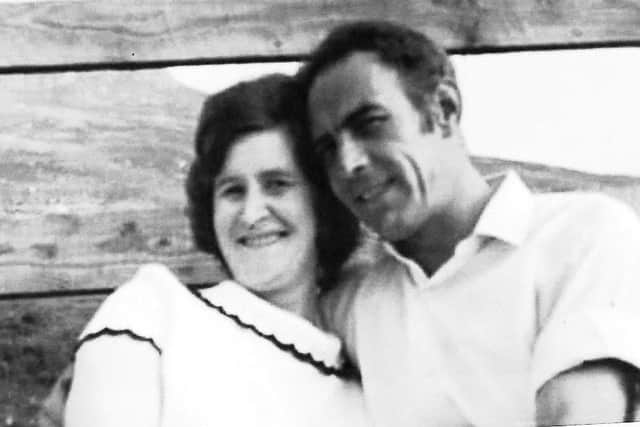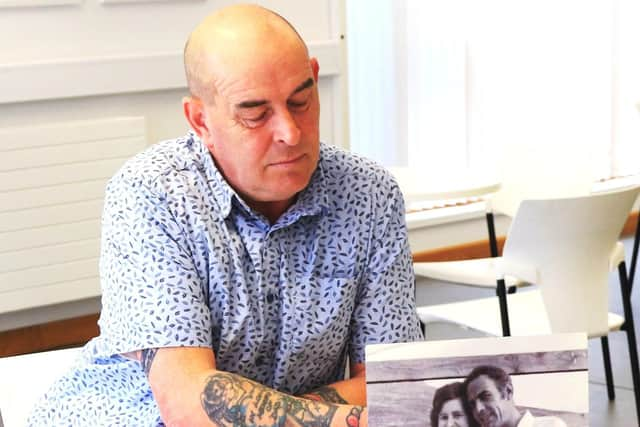45 years ago Gerald Cloete was shot dead by the IRA as he went to work


The gunmen crashed into his car and shot him as he tried to get out. He had previously served in the Royal Navy. He was married with five children and off-duty at the time of his death.
Gerald was a part-time member of the UDR. Originally from Gillingham in Kent, he first came to Derry with the Royal Navy.
Advertisement
Hide AdAdvertisement
Hide AdHe was stationed at HMS Sea Eagle and whilst here, like many men before him, he met his wife to be, Mary Gardiner, who grew up in Carrigans just across the border in County Donegal.


She fell in love with the young sailor from Kent and they were soon married.
In the early days of their marriage, Gerald and Mary lived in Asylum Road and later moved with their young family to the Glen Estate on the Northland Road.
At that time the Glen Estate was a mixed neighbourhood housing both Catholics and Protestants.
Advertisement
Hide AdAdvertisement
Hide AdThat was all to change as the Troubles gripped the city. Gerald, with his his experience in the navy, joined the UDR (established in 1970) and was promoted to the rank of Lance Corporal.
He also secured himself a job asa foreman at DuPont.
As the Cloete family established themselves in the Glen, tensions arising from the Troubles grew.
The hooded body of Glen resident and UDR member David Deacon was found near the Molenan customs post in March 1973.
Winston Cross, also from the Glen Estate, was one of two men abducted and shot by the IRA in November 1974.
The second of these was Joseph ‘Bert’ Slater. He was 29.
Advertisement
Hide AdAdvertisement
Hide AdTheir lifeless bodies were found on an isolated country road at Sheriff’s Mountain.
And in 1976, Stanley Wray, a member of the RUC, was ambished at his home in the Glen Estate, suffering severe gunshot wounds to his chest.
At first it was feared he would not survive the attack, such were his injuries, but he did. After the attack Stanley’s family were forced to move to the Waterside. After a year in recovery he returned to his work as a part-time member of the RUC at the Rosemount station.
On Sunday, May 20, 1979, while accompanied by his teenage son and daughter, Stanley was shot in the back by two IRA gunmen on the steps of Claremont Presbyterian Church as he made his way to worship.
Advertisement
Hide AdAdvertisement
Hide AdDuring the early and mid-1970s, the teenage Philip Cloete attended Templemore Secondary School, close to his home.
As a young Protestant, Philip was aware of the tensions in the city following internment and the trauma of Bloody Sunday.
Sometimes he and his Protestant mates had running battles with young Catholic teenagers, some coming from the Government Training Centre at Springtown not far from the Glen, some coming from the ‘old Glen’ just across the main Glen Road.
“I grew up beside Winston Cross and his family,” Philip says.
Advertisement
Hide AdAdvertisement
Hide Ad“There were five of them, four fellas and one girl and there were five of us - again four fellas and one girl. His brother, Vance, was the best man at my wedding. I was friendly, too, with Paul Deacon, David’s son. These murders certainly affected us.
“Then, on April 6, 1977, my own father was shot and killed by members of the Provisional IRA close to our home at Glenside Park. He was leaving for his work on the evening shift at Du Pont. My daddy was aged 46.”
Philip’s father was the 178th person to be killed in the Derry area during the Troubles. He was the 72nd UDR member to be killed since its formation.
Philip adds: “Within weeks of my father’s murder, we had moved to Nelson Drive. Here, in Sperrin Park, there is a squad of us who all moved over from the Glen.
Advertisement
Hide AdAdvertisement
Hide Ad“And, even though we were now living in a loyalist area, the Troubles, you could say, followed us. A year or so after my daddy was murdered, young Robert Struthers from the Glen was shot dead at Lorne Electric. Robert was a quiet lad. Then, a few years later, I was to witness the terrible shooting of John Olphert in his own shop in Nelson Drive. John had already resigned from the police where he had been a reserve constable.”